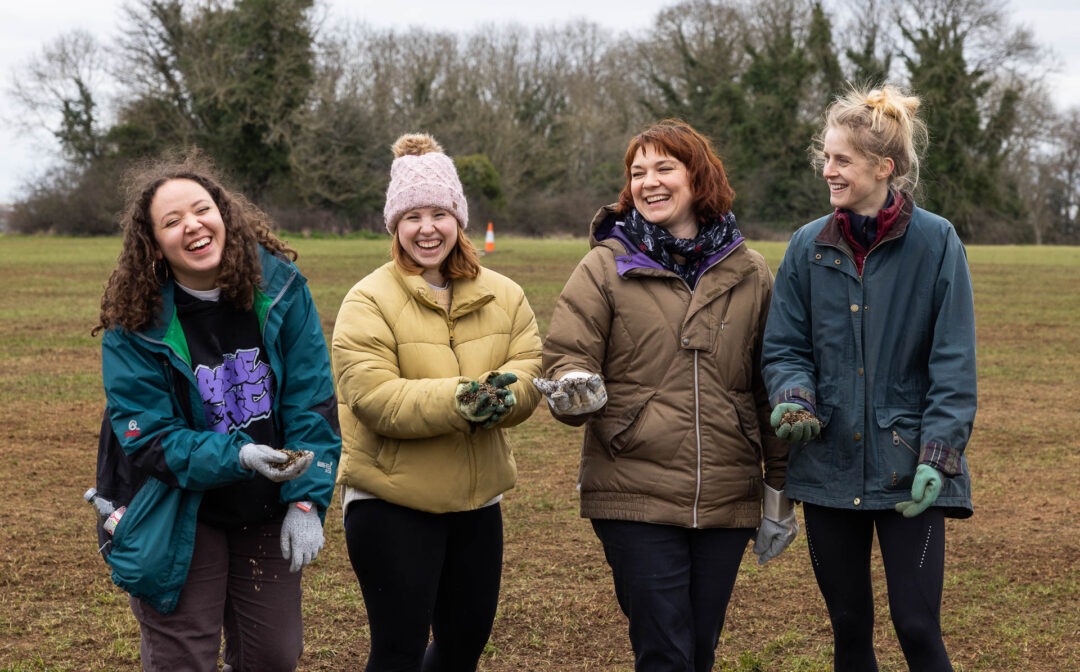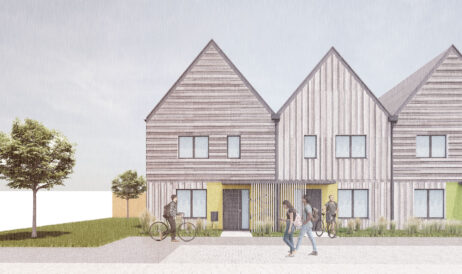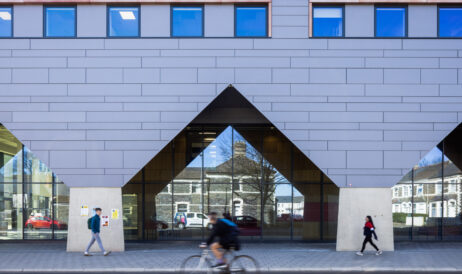If you took a short walk north from our Bristol headquarters last Friday afternoon you will have come across a group of people – me included – doing a curious shuffle over a patch of raked soil.
This wasn’t an exercise boot camp or an outdoor line dancing lesson. This group of volunteers from our Bristol studio were sowing a wildflower meadow.
Local partnerships
West Bristol Climate Action reached out to us for help at the start of the year. They’d partnered with Bristol City Council, Avon Wildlife Trust’s Grow Wilder, and the Downs Committee to source a patch of land on the Clifton Downs, a green space local to our office, and needed some funding and (muddy) boots on the ground to make this initiative happen. We jumped at the opportunity.
Bunks.Hardly.Bolts
The site (bunks.hardly.bolts on what3words) lies within Clifton Downs, an important green space in Bristol. It’s home to a variety of wildlife and neighbours the Avon Gorge, which hosts rare and endangered species.
A number of my Bristol-based colleagues use the Downs for breaks, exercise, and outdoor meetings. Several years ago, we even proposed a wind turbine and education space be installed here, which got a fair bit of attention and some serious backing. It’s a well-used place, so giving back to it made sense. Increasing its capacity for biodiversity makes even more sense…
The Biodiversity Emergency
Britain has lost more of its natural biodiversity than almost anywhere else in western Europe, the most of all the G7 nations and more than many other nations….We are eroding the very foundations of our economies, livelihoods, food security, health and quality of life worldwide.
Professor Andy Purvis, Research Leader, Natural History Museum
We are at a tipping point for biodiversity and climate change. As signatories of UK Landscape Architects Declare Climate and Biodiversity Emergency, we have a duty to raise awareness – and take action – to reverse the damage caused to our ecosystems.
Rakes Out
A group of volunteers – using one of their two annual ‘giving back’ days – spent a few hours raking over the site to remove as much grass as possible and leave at least 50% of the surface as bare earth before sowing the specially selected, locally sourced wildflower seed mix. Sowing included walking over the scattered seeds in a coordinated line. This curious shuffle – which resembles line dancing – helps gently embed the seed mix into the soil, giving it the best chance of taking hold.
On a fertile site, grass outcompetes wildflowers so as well as manually removing the existing grass, the seed mix included Rhinanthus minor (Yellow Rattle) which will further knock back the existing grass by feeding off the nutrients in its roots.







Learning from the land
The new wildflower meadow will not only promote biodiversity and environmental sustainability but will also serve as an educational tool for the local community to learn about these vital subjects. In fact, this was immediately put into action as a group of children from a local school joined in helping sow the wildflower seeds.
The wildflowers will hopefully establish well and will provide a vital source of food and habitat for many species of insects like bees, butterflies and beetles as well as birds and small mammals, enhancing the beauty and ecological value of the area.
It might just become one of our favourite outdoor meeting spots…
This guide from the Natural History Museum explains how to turn a patch of lawn into a more biodiverse habitat. For more advice on landscape strategies, design, and management, including Building with Nature accreditation and assessments, contact our Landscape Architecture team.
All photographs © Tom Bright.







